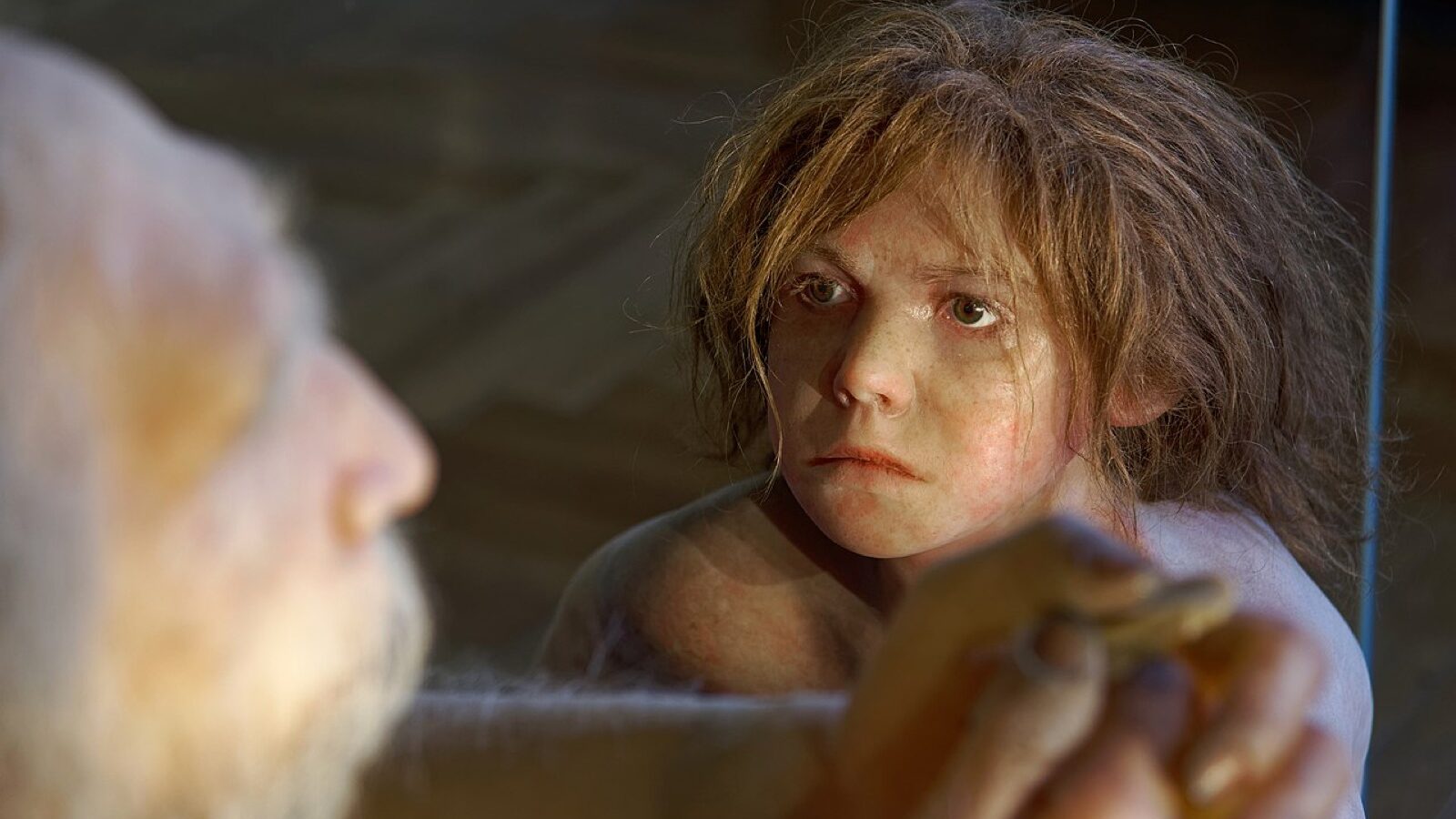Neanderthal bones from 146,000 years ago were recently found in a Spanish cave, Cova Negra. They include the skull of a six-year-old child who seems highly likely to have had Down syndrome and been deaf.
Researchers believe the child would have had difficulty in walking because of balance issues. The implication is that they would not have survived to the age of six without care and support.
This suggests Neanderthals were prepared to raise this child despite their own struggles for survival in extremely harsh environments.
There has understandablybeen much trumpeting of the discovery, which seems to suggest that the earliest types of humans supported disabled people within their communities.
Let’s consider it a bit more closely.
Early humans: them and us
The Neanderthals (Homo neanderthalensis) were a group of early humans who died out about 40,000 years ago. They had been around for at least 430,000 years.
They are distinct from but related to other early humans – Homo sapiens, us. We’ve been around for about 300,000 years.
From what we know, they had quite sophisticated technology (such as stone tools), used hearths for cooking and warmth, made simple clothes and used medicinal plants.
Throughout the 19th and 20th centuries, Neanderthals were seen as primitive, violent and brutish and were a byword for stupidity.
However, as Angela Saini pointed out in her recent book Superior, they have undergone a remarkable rehabilitation in recent years, ever since it was discovered, partly through DNA testing, that they were far more assimilated with early humans than originally thought and the two species had interbred.
Immediately, the word went out that Neanderthals were much smarter, cooler and more sophisticated than we imagined.
Let’s therefore be careful.
We tend to project our personal beliefs and opinions onto the past. We can stamp ourselves most strongly onto the era of early humans because the evidence we have is so light.
In the 19th century, speculation about early humans was used to buttress contemporary racist beliefs and degeneration theories. We must not do the opposite now.
Were Neanderthals and early Homo sapiens gentle, caring, tolerant inclusionists? I doubt it.
We try to find the shadow of our best selves in our most distant ancestors, either by identifying with them or emphasising our superiority over them.
Nevertheless, let us take this new piece of knowledge as a useful contribution to our understanding of the place of people with learning disabilities in human history.
It gives a rebuff to the persistent myth that disabled children were cast off or killed in earlier societies. This belief feeds (and grows from) the idea that disability is a burden and investing resources in disabled people a luxury only indulged by modern wealthy societies.
Life of value
Satisfyingly, it is also a blow against those grotesque individuals who think it immoral for disabled children to exist.
Philosopher Peter Singer advocates the euthanasia of “retarded infants” on the grounds that they bring suffering into the world. Evolutionary biologist Richard Dawkins once said that a woman pregnant with a Down syndrome baby should “abort it and try again. It would be immoral to bring it into the world.”
The discovery that early members of the Homo genus, in extreme circumstances, worked to ensure the survival of a disabled child, should make such intellectuals reflect more deeply on what it means to be human. This might lead to them dropping their silly, God-like fantasies about who should live or die based on magical ideas about suffering and happiness. However, readers are advised not to hold their breath.
Near a Spanish cave 146,000 years ago roamed a small Neanderthal child with Down syndrome, able to do so because their family (probably in its widest sense) made it possible for them.
Can we super-sophisticated Homo sapiens manage to do the same?





